How to turn off Windows efficiency mode for Google Chrome?
Introduced by Microsoft, Efficiency Mode primarily aims to reduce battery consumption and CPU resource use on Windows operating systems. By minimizing background processes, it enhances your device’s battery life, efficiency, and responsiveness.
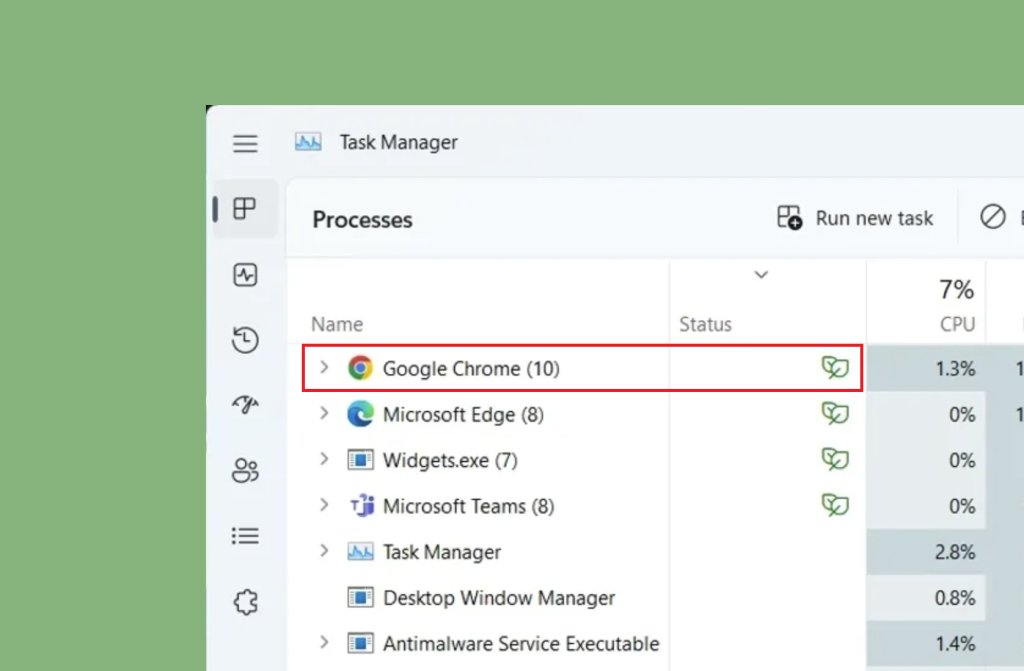
Several users have reported a performance slowdown, particularly when using Chrome. Let’s explore some methods to resolve problems related to disabling Efficiency mode in Chrome.
How to Permanently Disable Efficiency Mode in Chrome?
Efficiency Mode in Chrome saves browser resources by prioritizing active processes, thereby improving task execution. However, if Chrome continuously slows down or crashes, disabling this feature can provide an effective solution.
You can disable Chrome’s Efficiency Mode permanently through several methods, such as the Windows Task Manager, Chrome’s properties, or flags. If these are ineffective, consider deactivating the Memory Saver feature to potentially resolve the issue.
1. Via Task Manager
The most straightforward way to disable Efficiency Mode for Chrome is via the Task Manager.
To do so, follow the steps given below:
- Open Google Chrome on your computer.
- From the taskbar, right-click on the Start icon or press Ctrl+Shift+Esc to open Task Manager directly.
- Locate Google Chrome within the Processes tab and click on it to expand the list of processes.
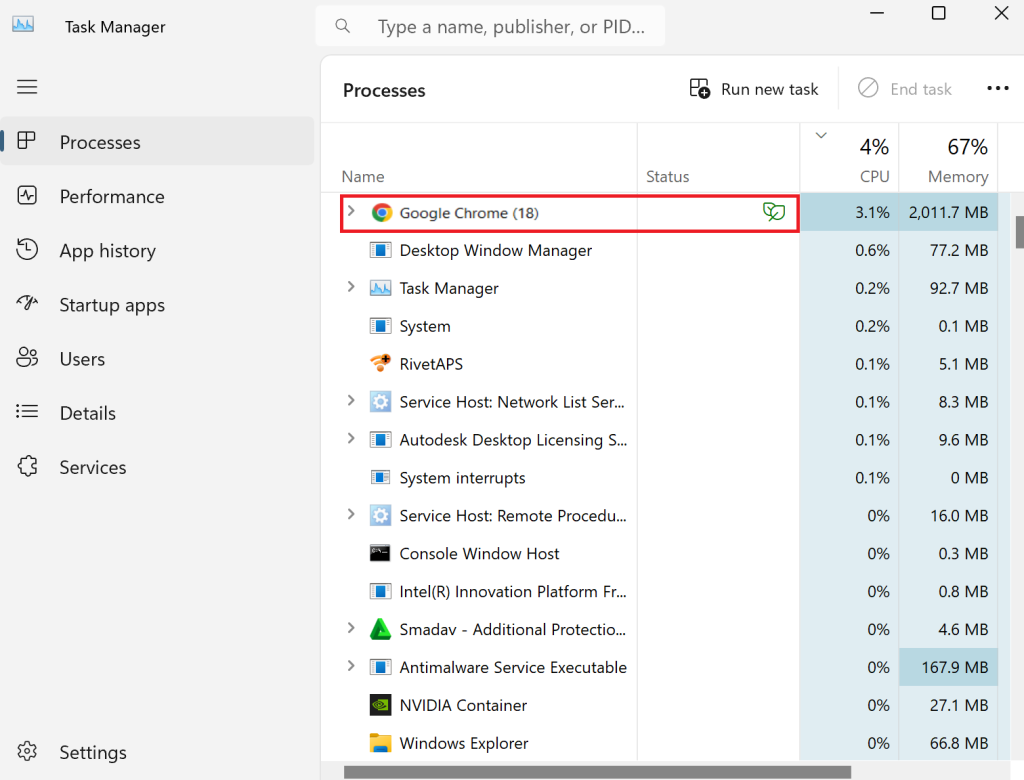
- Select a Chrome process with the Efficiency Mode symbol, usually indicated by a leaf icon.
- Right-click on it and deselect the Efficiency Mode option from the context menu.
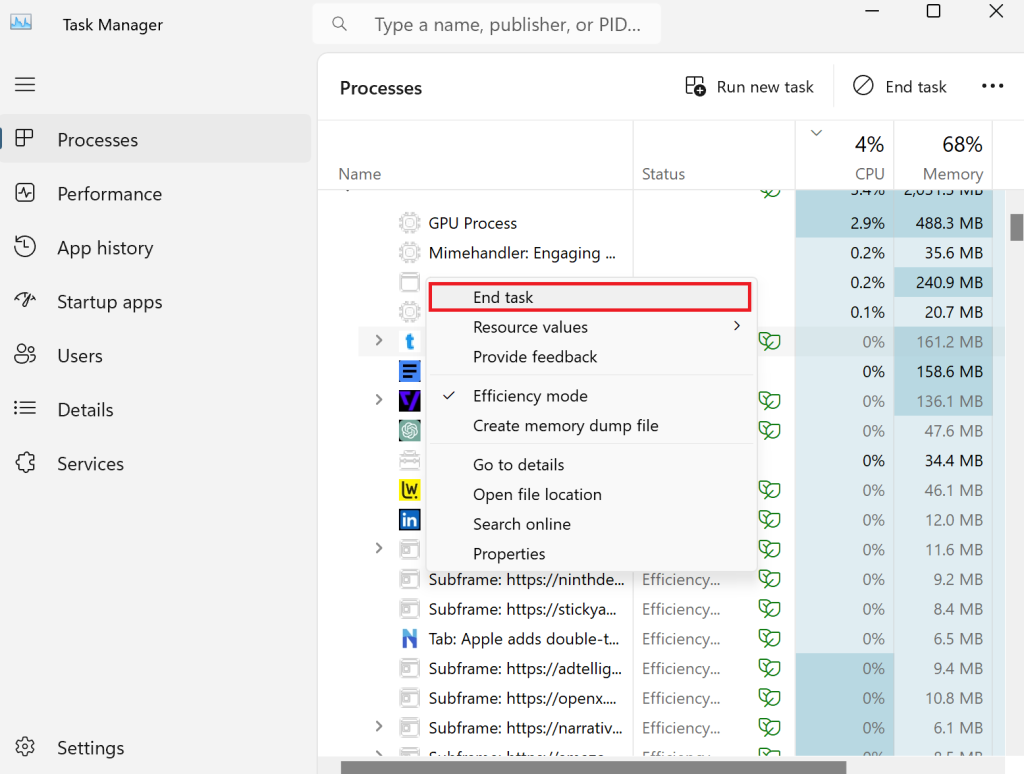
- Repeat the steps for all the Chrome processes showing the leaf icon to disable Efficiency Mode completely.
2. Via Chrome Properties
Alternatively, you can disable Efficiency Mode through Chrome Properties with the following steps:
- Ensure that your Google Chrome browser is fully closed.
- Right-click on the Google Chrome shortcut on your desktop and select Properties.
- In the Properties window, append the following command line parameter in the Target field after “chrome.exe”:
--disable-features=UseEcoQoSForBackgroundProcess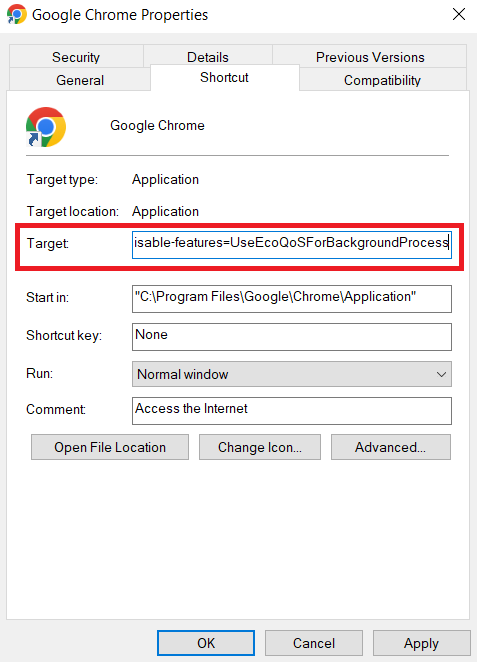
- Click Apply and then OK.
- If prompted for administrator permissions, click Continue.
- Reopen Google Chrome and type chrome://version in the address bar, then press Enter to check whether the command line flag has been properly added.
Check if Chrome’s performance has improved after these changes.
3. Via Chrome Flags
To disable Efficiency Mode using Chrome Flags, follow these steps:
- Open your Chrome Browser.
- type or paste the following URL in the address bar:
chrome://flags/#high-efficiency-mode-available- Set the flag to Disabled.
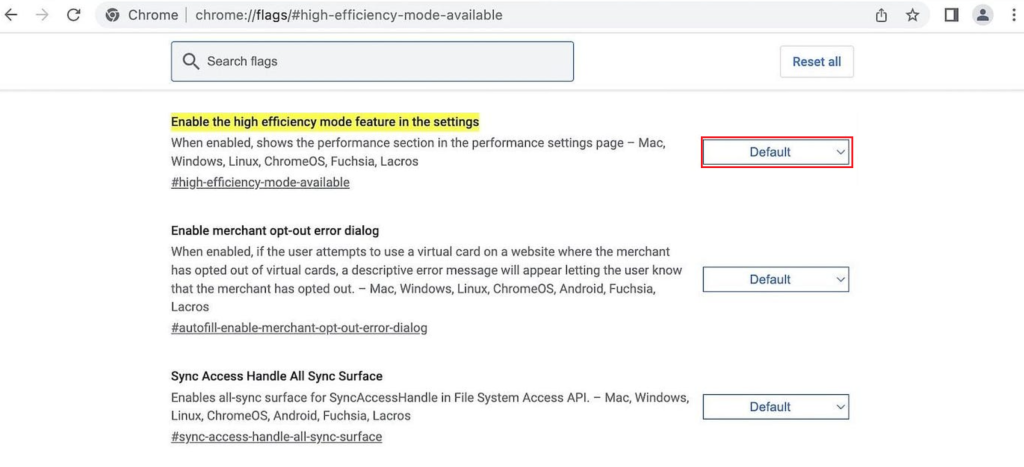
4. Disable Memory Saver
The Memory Saver feature in Chrome conserves memory space but may trigger Efficiency Mode automatically on Windows. To disable it:
- Open the Google Chrome browser on your device.
- Click on the three vertical dots icon in the top-right corner.
- Select Settings from the dropdown menu.
- Scroll to the Performance section or directly search for “Performance” in the Settings search bar.
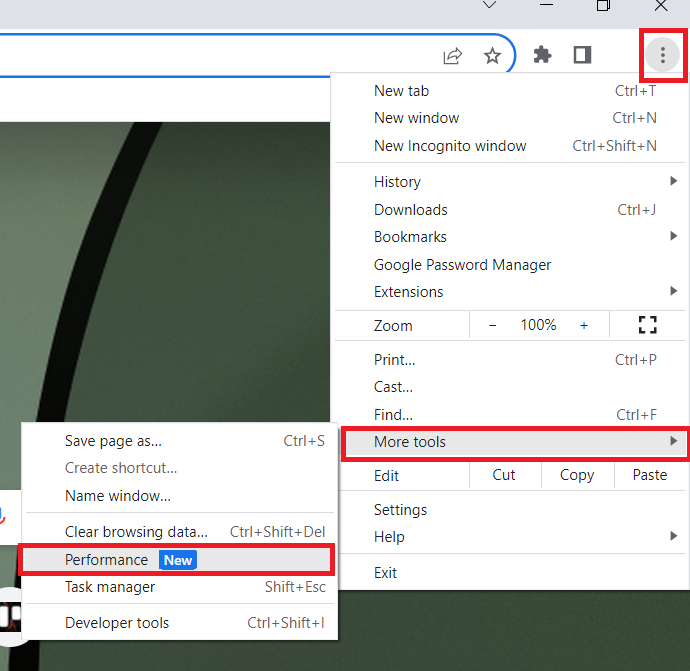
- In the Performance section, locate and disable the Memory Saver toggle.
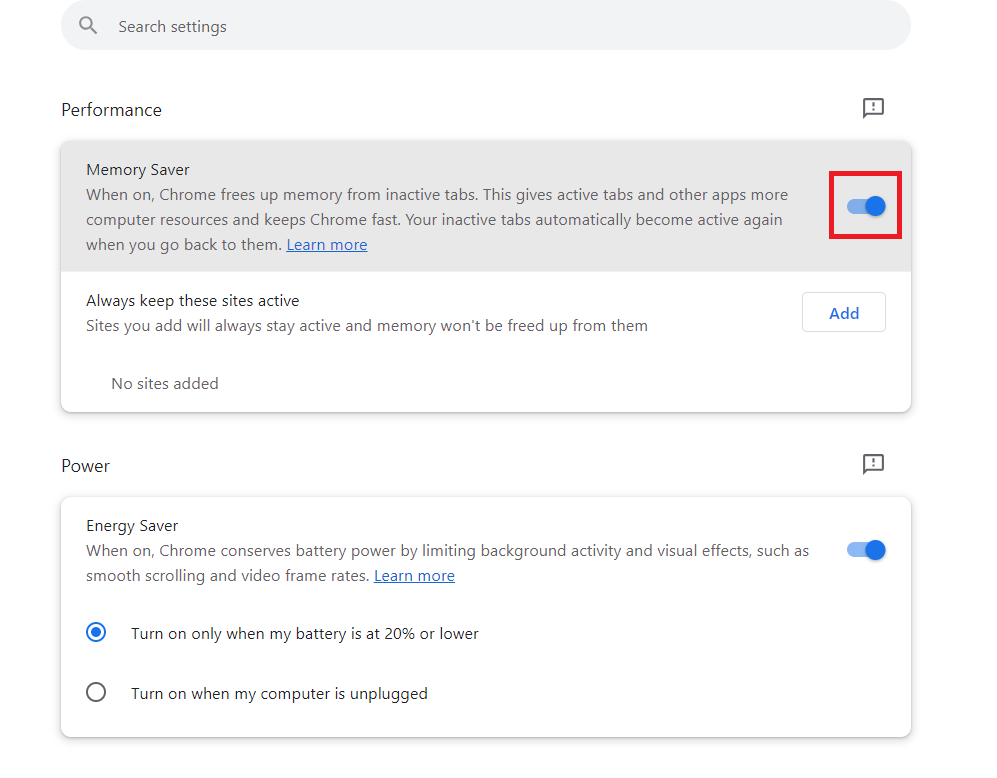
Should you have Chrome Efficiency mode enabled?
Whether or not you should enable Chrome Efficiency mode depends on your specific use cases and your computer’s capabilities. Enabling Efficiency mode can conserve resources and extend battery life, but it may also slow down some processes.
Why is my Chrome browser slow and unresponsive all of a sudden?
This often happens when your browser is consuming excessive system resources or when there is a problem with the browser itself. Closing unused tabs and other resource-intensive programs may help. Additionally, check for a slow internet connection, as this can cause performance issues.
Does Chrome Efficiency mode slow down the computer?
Efficiency mode is designed to conserve energy, but in some cases, it might reduce the performance of certain programs or overall system responsiveness. If you encounter such issues, consider disabling Efficiency mode.





